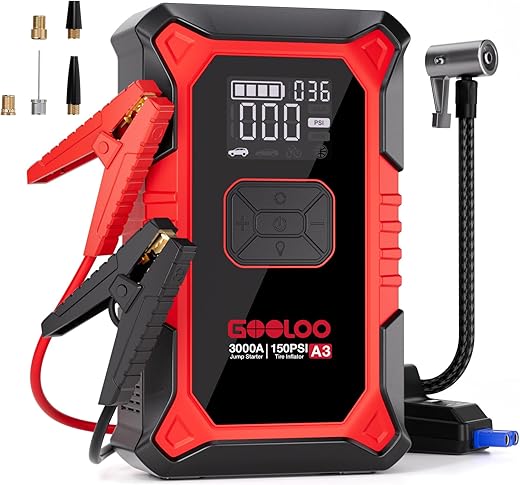
3000A cranking and a 150PSI pump — a compact $66 emergency kit we trust, with sensible trade-offs.
Picture this: it’s late, the car won’t turn over, our phone’s flirting with 2%, and the spare tire is slowly losing air — the kind of roadside breakdown that makes you wish your trunk contained a tiny emergency pit crew. We need a compact, reliable solution that can crank an engine, inflate a tire, and power our devices without turning the back of the car into a wiring nightmare.
Enter the GOOLOO A3 3000A Jump Starter with Air Compressor — a single unit that packs 3000A peak cranking power, a 150 PSI auto-shutoff inflator with a digital readout, a built-in power bank and SOS light, and a robust BMS for multiple protections. At $66.49 and an expert score of 8.6/10, we find it a technically capable, trunk-ready multi-tool — just be mindful of the compressor’s duty-cycle limits and the fine hose threads when you’re in a rush.
GOOLOO A3 3000A Jump Starter with Compressor
We consider this unit an excellent multi-tool for roadside preparedness, offering serious cranking power alongside a convenient inflator and power bank. It’s a dependable choice for drivers who want compact emergency capability, though heavy inflation sessions require attention to duty cycle limits.
Overview
We approached this unit as a compact, tech-forward solution for roadside emergencies: a lithium-based jump starter with an integrated compressor and a feature set designed for versatile use. The chassis is lightweight yet sturdy, and the controls emphasize a straightforward, tactile experience for night and day operation.
Core features and why they matter
Real-world performance
The jump capability is the headline: the high peak current and a dedicated BOOST function make it effective at reviving deeply discharged 12V systems. The compressor is capable and quick for most inflations (cars, bikes, balls), and the auto-shutoff prevents overinflation. That said, continuous pump runtime is finite — expect duty cycle pauses during heavy use.
Quick spec summary
| Spec | Value |
|---|---|
| Peak Output | 3000A |
| Supported Engines | Up to 9.0L gas / 6.5L diesel |
| Max Pressure | 150 PSI |
| Airflow | ~35 L/min |
| Weight | ~3.6 lbs |
| Operating Temp | -4°F to 140°F |
Practical use cases and tips
Safety, charging and maintenance
Closing thoughts
We view this as a high-value, technical tool for drivers who want consolidated emergency capability. It balances impressive starting power with practical inflating abilities and smart safety systems — a strong option for daily drivers, weekend adventurers, and fleet vehicles alike.

FAQ
Yes — the 3000A peak output is engineered to provide the burst current needed to crank large gasoline V8s and many diesel engines within the stated limits. For best results keep the jump starter charged and use the BOOST mode only when standard start attempts fail.
The compressor has a practical duty cycle: short inflation tasks (a few minutes) are fine, but extended runs will trigger thermal protection and require cooldown periods. For inflating multiple tires back-to-back, plan for intermittent rests to avoid overheating.
You can store it in the vehicle, but extreme temperatures can affect lithium battery health. We recommend keeping it charged, avoiding long exposure to very high heat or cold, and performing a monthly charge check if left unused.
It functions as a power bank and can charge USB devices independently. However, simultaneous heavy loads (jump-start plus fast charging) may reduce available capacity and runtime. It’s best to prioritize critical functions.
The compressor fittings have fine threads; align carefully and hand-start the thread to avoid cross-threading. Ensure the valve is sealed properly and use the clamp attachment for quick, secure connections to vehicle or bike valves.
We advise testing the unit every 1–3 months: check battery level, run a quick inflation of a tire or ball, and visually inspect cables and connectors. Regular checks ensure readiness and help spot wear early.

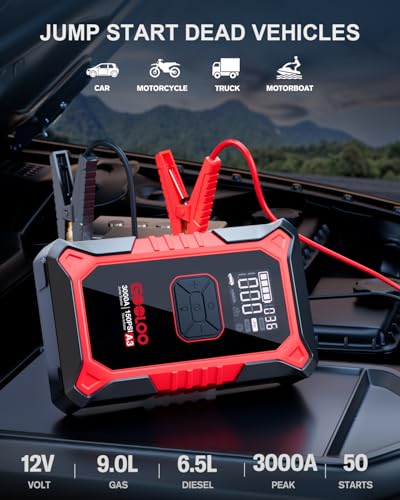


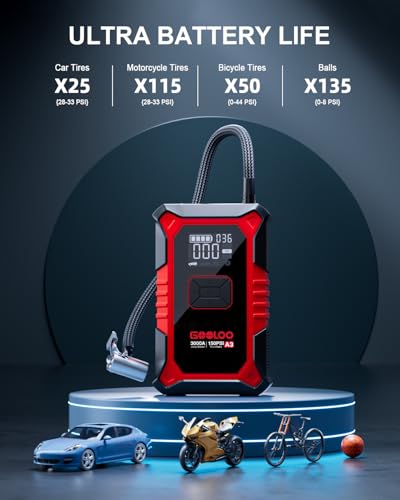



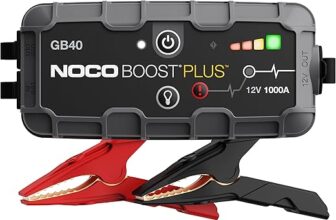

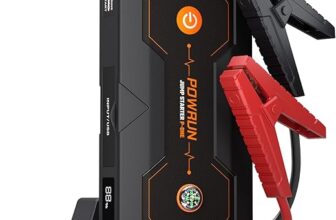
I read the review and then went on a wild shopping spree of “things to keep in a car”. This one actually made the cut.
Pros: light, affordable, multi-purpose.
Cons: not for heavy lifting, hose is meh.
Also: if you name it “Allie the A3” you might feel better about emergencies. 😅
Allie the A3 is now a thing in my trunk. Will report back if Allie saves me from a midnight roadside drama.
Naming it is an excellent user-experience hack. Glad it earned a spot in your kit!
Haha — ‘Allie the A3’ should come with a personalized manual. But yeah, solid buy for the price.
Short and sweet: the compressor actually surprised me. Auto-shutoff is handy when you’re tired or in a hurry.
Same here — saved me from over-inflating my bike tire. Very handy.
Glad it worked well for you — auto-shutoff is a frequent highlight from testers.
Quick maintenance question: how often should I fully charge the unit if it’s just sitting in the trunk? The article didn’t say.
Good practical question. Manufacturer guidance generally suggests a top-up charge every 3–6 months when not in regular use. If you live in extreme temps, check more often.
I charge mine every 3 months and run a quick self-test. Gives peace of mind.
Also store it charged (not fully depleted) and avoid leaving it in direct sun or freezing conditions for long periods.
Two thoughts: portability vs. durability. The unit is light and easy to stash, but the exterior plastic and connectors could be beefier. Also, the LED indicators are a bit hard to read in sunlight.
If GOOLOO improves build materials and display visibility, this would be perfect.
Good points — the review calls out similar trade-offs. Manufacturers often balance cost with ruggedness at this price tier.
I solved the display issue by adding a tiny foldable sunshade from a cheap phone screen protector. Not pretty, but it works lol.
For connectors, I wrapped mine with a little electrical tape to reduce wear. Quick hack.
Nice hacks — thanks everyone. I’ll try the tape trick.
I’m considering this for my cold-climate winter bag. The article lists 3000A peak output — how reliable is that in sub-zero temps? Any tips for keeping lithium jump boxes working when it’s freezing outside?
I store mine in a soft cooler with a hand warmer if I’m going on a long trip in winter — saved me once when the car wouldn’t crank on a -10°C morning.
And note: if the battery you’re trying to jump is already frost-damaged, any starter might struggle. Prevention > cure.
One more practical point: always test the starter at home before you actually need it in the cold, so you know it still holds charge.
Lithium batteries lose effective capacity in very cold temperatures. The 3000A is peak; real cold reduces performance. Store the unit in a temperature-insulated bag or bring it into a heated space before using if possible. For extreme cold, keep it in your cabin rather than the trunk.
Also check the manual for operating temperature ranges. Some folks tape a small heat pack to the unit (careful with safety) for a few minutes before use.
LOL at calling it an “all-in-one” emergency kit. It’s more like an “all-in-most-one” — does everything until you really need to do everything. Still, beats being stranded.
Plus, $66.49 is a steal if it saves you one tow fee.
Agreed. Mine saved me once and paid for itself. 😂
Ha — fair characterization. The reviewer tried to balance enthusiasm with realistic limits; it’s a great compact tool but not a substitute for professional equipment in heavy use.
Skeptical. $66.49 for a 3000A peak seems too good to be true. Are there known reliability issues? anyone had one die after 6 months? 🤔
Fair concern. While many buyers report good serviceable life, cheap multi-tools can show variability. Check warranty terms and test it periodically. The review cites it as dependable but not industrial-grade.
I had mine 9 months without problems. Just charge it every few months and don’t overwork the compressor.
I like the idea of a combo unit, but the article’s note about duty cycle limits worries me.
If I have to pump up a truck tire multiple times, will the compressor overheat quickly? The expert verdict said “attention to duty cycle limits” but gave no clear numbers for real-world use.